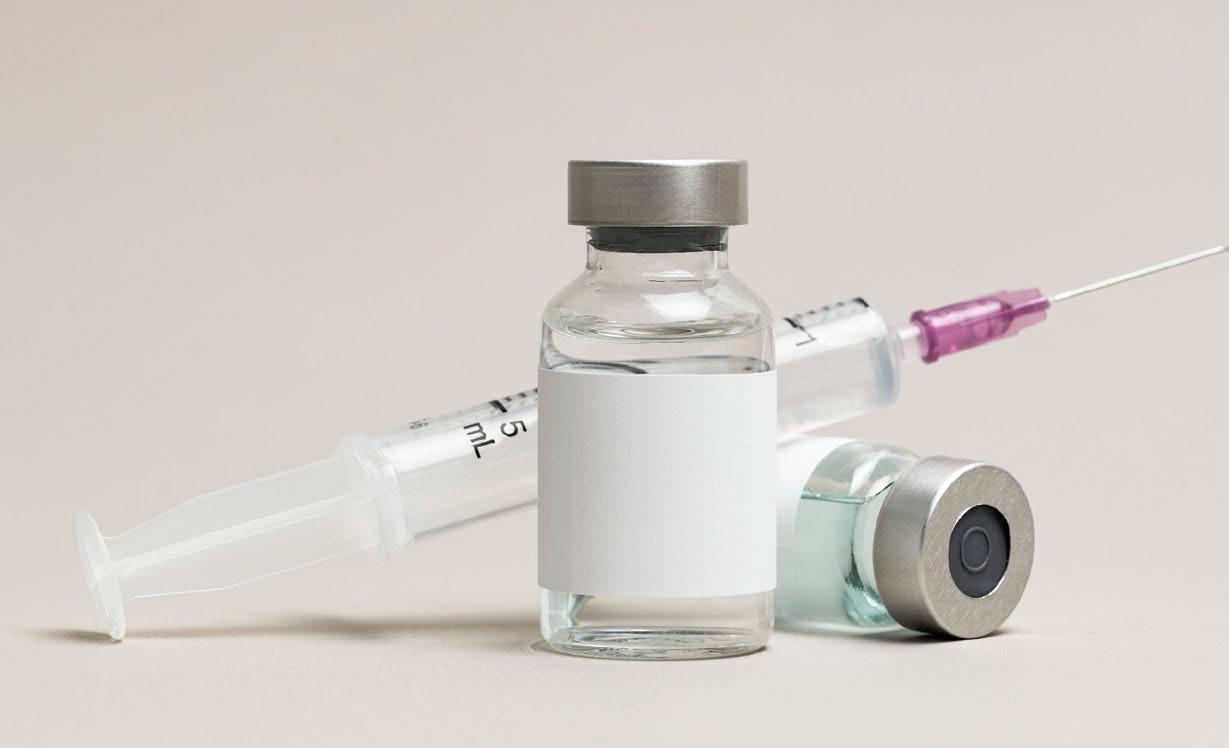
2 minute read
SCIENCE BEHIND WEIGHT-LOSS DRUGS
Weight loss drugs work by mimicking a hormone called glucagon-like peptide 1 (GLP-1), which regulates blood sugar levels and slows down the rate at which food leaves the stomach, making people fuller for longer. Some people lose 15 percent of their body weight or more after 68 weeks on semaglutide, which is approved in the US for weight loss as Wegovy and for type 2 diabetes under the brand name Ozempic.
Collectively, these drugs sold under the brand names Ozempic, Wegovy and Rybelsus, semaglutide accounted for $10.7 billion in drug spending in 2021, up 90% over the year before, which ranked it fourth among drug expenditures, according to a study published last year in the American Journal of Health-System Pharmacy.
Mary Ann Carlisle, executive VP of ELMC Risk Solutions, LLC, offers this perspective, “Injectables referred to as GLP1s, like semaglutide (Ozempic, Wegovy), have been emerging as safe, effective, and generally well-tolerated options for chronic weight management in addition to their initial indication, T2DM.”
She says that while GLP1s are often restricted for use in diabetics, their role will likely continue expanding as further studies are completed and the potential to improve other chronic diseases is quantified.
“Expect tirzepatide (Mounjaro), a novel dual GIP/GLP1 agonist, to experience an increase in utilization if also approved for weight management,” she continues. “Early comparative studies have suggested tirzepatide is at least as effective, and potentially superior to semaglutide, for weight management. At this time, many employers are closely monitoring their use as the number of scripts for these medications have exploded. We recommend finding the right balance for each plan sponsor.”
Another caveat: amid rising demand for these drugs, some obesity experts are concerned about the drugs’ impact on patient health.
One expert cites a large clinical trial for Wegovy that showed that about 40% of the weight participants lost was lean mass. Side effects like nausea, vomiting, and a possible link to rare cases of pancreatitis also still plague this newest class of drugs, which imitate the effects of a hormone called glucagon-like peptide 1 (GLP) that helps people feel full.
Changing The Conversation About Obesity Treatment
More than a third of adults in the United States are now classified as obese, with some ethnic groups approaching a 50% obesity rate, according to the Centers for Disease Control and Prevention. George J. Huntley, CEO, Diabetes Leadership Council stresses that obesity should be on every employer’s radar across the country.
George J. Huntley, CEO

“We are nearing the point where half of the adult population of the US has the disease making it a major but not well recognized driver of health care costs,” says Huntley, citing these facts:
• A person with obesity has on average 50% higher health care costs than a normal weight person.
• Obesity is second only to smoking as a preventable cause of death in the US.
• A person with obesity has an 80-85% risk of developing type 2 diabetes.
• Cancers associated with excess weight contribute to 40% of all cancers.
• Every 5 point increase in BMI results in a 32% increase in heart failure risk.
But he states that employers have been slow to make the connection between obesity and pre-diabetes from a coverage perspective, even though it is well known that losing weight during prediabetes can prevent a patient from ever developing diabetes.









